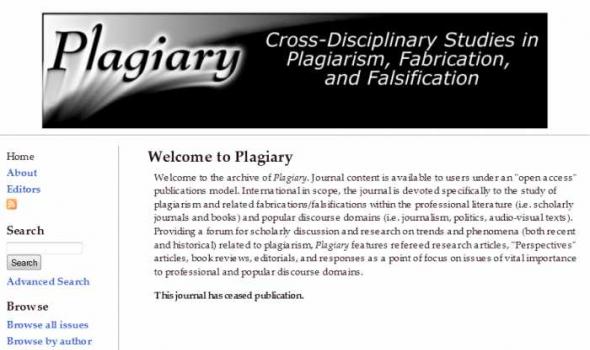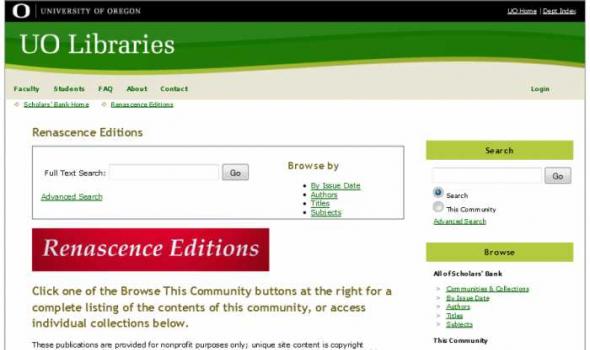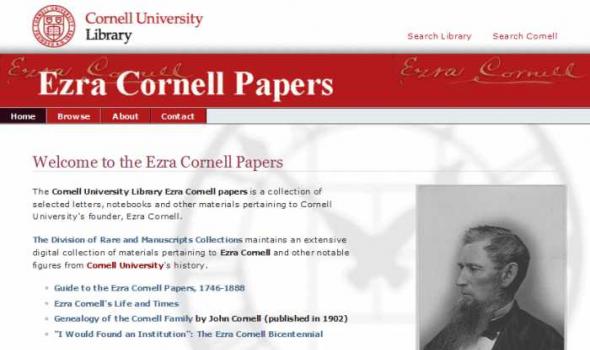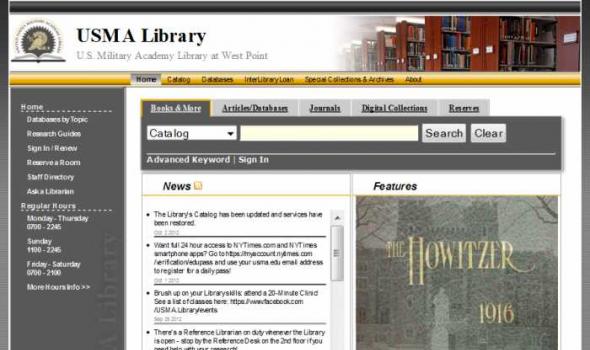Education
Reading: Harvard Views of Readers, Readership, and Reading History is an online exploration of the intellectual, cultural, and political history of reading as reflected in the historical holdings of the Harvard Libraries. For Internet users worldwide, Reading provides unparalleled digital access to a significant selection of unique source materials: For researchers, teachers, and students who may not have ready access to extensive historical collections, Reading provides an inspired opportunity to participate more fully in this rapidly expanding research area.
T he Archival Photographic Files document the history of the University of Chicago and the development of its campus, academic programs, and community life. Individuals & Groups Images not yet available online. Images of U of C faculty, students, staff, alumni, administrators, donors, visitors as well as academic and administrative groups, classes, and departments. Buildings & Grounds Images of U of C buildings, campus plans, and surrounding neighborhoods including Hyde Park, Kenwood, and Woodlawn. Events Images of U of C academic, public, and historical events, ceremonies, inaugurations, reunions, and visits of notable individuals.
This online publication reproduces in digital form the text and images from the four University of Chicago Centennial Exhibition Catalogues. These publications were issued in conjunction with a series of exhibitions organized by the Department of Special Collections, now the Special Collections Research Center, to celebrate the 1991-1992 Centennial of the University of Chicago.
About Over the past decade, cross-disciplinary interest in plagiarism and other forms of fraud as a focus of study has resulted from various discourse communities having to deal with serious violations of scholarship norms. Plagiarism, falsification of data, and fabrications have tainted the reputations of individuals, institutions, and professions as a whole. To bring together the various strands of scholarship which already exist on the subject, and to create a forum for discussion across disciplinary boundaries, the new scholarly journal Plagiary exists.
About the Collection To commemorate UWM's 50th anniversary, the UWM Libraries prepared a digital collection of photographs documenting the history of UWM and its predecessor institutions, the Wisconsin State College, Milwaukee (formerly the Milwaukee State Teachers College) and the University of Wisconsin Extension Center at Milwaukee. The digital collection assembles images physically located in three separate collections: the George M. Richard photographs of UWM collection (UWM Manuscript Collection 167); the UW-Milwaukee Photographs Collection (UWM Archival Collection 6); and the UWM Dept. of Theatre and Dance records (UWM Archival Collection 85). George M.
Tufts College: A Wartime Campus, 1943-1946 Welcome to Tufts College: A Wartime Campus , the second exhibit in a series created by the Tufts University Digital Collections and Archives. This exhibit explores the experience of students attending Tufts College during World War II. Raising of Colors This online exhibit was created in conjunction with an exhibit on display in the Tisch Library from April until September 2001. Both exhibits were designed by Amanda Yost, G2001. The entire series of exhibits has been funded by a committee of alumni and veterans of the U.S. Navy programs that were on Tufts' campus from 1941-1972.
Tufts College: Graduates in Wartime Welcome to Tufts College: Graduates in Wartime , the third exhibit in a series created by the Tufts University Digital Collections and Archives. This exhibit explores the transition many Tufts College students made from student to Naval Officer during the fighting of World War II. This online exhibit was created in conjunction with an exhibit on display in the Tisch Library from January until September 2002. The physical exhibit was designed and mounted by Tatiana Sizonenko, and the web exhibit was created by Patricia Hughes G2000. The entire series of exhibits has been funded by a committee of alumni and veterans of the U.S.
This web exhibit is an electronic version of an exhibit mounted in the Tisch Library located on Tufts University's Medford Campus. The exhibit will run from October, 2000 through March, 2001. Funding for the exhibits is provided by Tufts alumni who were part of the United States Navy Officer Training Programs on the Medford Campus from 1941-1972. The exhibit was designed and mounted by Patricia Hughes, G2000. Material used in this exhibit is now housed in the Digital Collections and Archives.
Muriel Simonson at Jackson College 1924-1929: a biographical exhibit Welcome to the online biographical exhibit about Muriel Simonson, who had been an exceptionally talented student of Jackson College, Tufts University, in the 1920s. This exhibit highlights Muriel's academic and athletic achievements and the fact that she was the first undergraduate theater producer (male or female) at Tufts University while also documenting her much-lauded acting and singing. Muriel Simonson's years at Jackson College are presented within the larger institutional, historical, economic, and gender contexts of her time.
When Donald Winslow (A34, MA35), contacted the Digital Collections and Archives in 2007, we decided to create an autobiographical online exhibit containing his memories of Tufts. I had just completed an exhibit about Muriel Simonson (A'29) . A few years younger than Muriel, Donald Winslow and John Holmes (A'29) , Muriel's fiancee, were contemporaries at Tufts, with John Holmes first working as assistant in English at Tufts and then returning as instructor of English in 1934 when Donald began his MA in English.
was born May 28, 1894 in Sterling, Massachusetts. One of four children, Donald had an older sister and brother, Josephine and Malcolm, and a younger sister Jean. A graduate of Medford High School, class of 1912 and Tufts College, class of 1916, Donald turned his love of modern languages into a profession of school teacher. These two interests led him to France in 1920, onto Germany in 1922, and then back to France. He opened a school in 1924 in St. Cloud outside of Paris and firmly established himself in the realm of international education in France.
History of Medicine Robert Hooke (1635-1703) was a remarkably versatile man — artist, biologist, physicist, engineer, architect, inventor, and more. However, his crowning glory was Micrographia: or Some Physiological Descriptions of Minute Bodies made by Magnifying Glasses , first published 1665. It was a masterpiece — an exquisitely illustrated introduction to the previously unknown microscopic world. This exhibit focuses on Hooke's influences and legacy in print, the pioneering books that stimulated Hooke's research, and the works he left for others — most famously the great Dutch microscopist, Antoni van Leeuwenhœk (1632-1723). August 1 – November 1, 2007.
The Donald S. Fredrickson Papers Donald Fredrickson (1924-2002) was an American physiologist and biomedical research leader who made significant contributions to medicine over the course of four decades. Fredrickson's system of classification of abnormalities in fat transport was adopted by the World Health Organization as an international standard for identifying increased risks of coronary artery disease linked to the consumption of fats and cholesterol. He also discovered two genetic diseases caused by disorders in lipid metabolism.
Linus Pauling, an OSU alum (Oregon Agricultural College, class of 1922), was among the most decorated of American scientists. He received his first honorary doctorate from his alma mater in 1933, and in rapid succession was similarly honored by institutions including Oxford University, the University of Chicago, Princeton University, Cambridge University and the Sorbonne. By the time of his death, Pauling had been awarded forty-seven honorary doctorates. Not included in this total is the honorary diploma received in 1962 from Washington High School in Portland, Oregon.
Mission The purpose of the UO Channel is to provide a gateway to streaming media at the University of Oregon. Programming featured on the main UO Channel site is to reflect the University’s dedication to “…the highest standards of academic inquiry, learning, and service…” Criteria include: General guidance for the UO Channel is provided by an Advisory Board with representatives from: Announcements Welcome to the 2011 UO Academic year! The UO Channel is now compatible with iOS devices: iPhone, iPad and iPod. Viewing our video on your mobile device is simple - browse to your selection, and press play!
About Scholars' Bank Welcome to Scholars' Bank , an open-access digital repository created to capture, distribute and preserve the intellectual output of the University of Oregon. Scholars' Bank is maintained by the University of Oregon Libraries, under the coordination of Digital Library Services . Using the open-source software DSpace, available from MIT and Hewlett Packard, Scholars' Bank provides stable, long-term storage needed to house the digital products of UO faculty and researchers. If you are interested in starting a community or contributing to an existing community contact a Scholars' Bank representative at scholars@uoregon.edu .
The University Archives Photograph Collection contains modern and vintage photographic prints related to the University of Oregon. The photographs depict a variety of buildings, historic scenes, events, students, faculty and staff, and scenes of campus life.
A Digital Collection of Cornell's University Archives The Cornell University Digital Archives is a collection of publications from the Cornell University Archives, comprising of a total of 26,481 pages dealing with the history of Cornell University. These materials date from 1868 until 1945 and involve a number of different publications including annual reports, class books and University registers. For a a complete listing of our digital collection click on the browse link.
About the Ezra Cornell Papers Preface Ezra Cornell referred to himself as a farmer and mechanic who had spent some time working in the telegraph industry. His ambition and imagination, however, were not so prosaic. Skillful work, uncommon tenacity, and fortuitous circumstances resulted in his amassing a fortune. As soon as it became clear that it was a fortune, he promptly rejected conventional practice and sage advice, and directed that those riches be used to found a unique university: a comprehensive and practical institution dedicated to all forms of intellectual endeavor.
Celebrating Women The achievements of women have marked every aspect of Washington University history, in its excellence of teaching, in the depth of its research, and in the lives of so many students. We hope you will enjoy browsing the thematic topics of this online exhibit, which are listed on the right-hand menu. Each section contains multiple pages of information. The exhibit may also be searched by keyword, or you can select "Browse Items" or "Browse Collections" to view lists of materials used in this exhibition. The stories of these accomplishments could fill pages upon pages. This exhibit can only offer a beginning look into this history by highlighting some of these women and their accomplishments.
These books have been digitised and converted to web format at the Centre for Digital Library Research . Research is continuing into ebook development and indexing, partly funded by the University of Strathclyde Research and Development Fund.
Writing Blanks, Board Games and other Educational Games of the 18th and 19th centuries from the John Johnson and Harding Collections Since the acquisition of the Opie Collection, the Bodleian has become a centre for studies in juvenilia; this has led to increased interest in the games in the John Johnson Collection, with concomitant preservation and handling problems. Many of these games are housed in drawers, others in large folders. Because of their size they are vulnerable. They are also rare. The aim of the project was to digitise a large proportion of this material, and to make it available to the international research community both through the John Johnson Collection online catalogue and through the ODL website.
DIGITAL COLLECTIONS About the Collection Since 2002 the University Libraries have been building a collection of color digital copies of theses and dissertations authored here at the University of Louisville. This effort is in keeping with an international trend of institutions migrating to electronic theses and dissertations (known as ETDs) in order to provide free worldwide access to these titles and to enable graduate students to include digital media in their works. Both the University of Louisville's Graduate School and J.B. Speed School of Engineering incorporated the utilization of digital technologies into their thesis and dissertation guidelines. In July 2006 the Speed School's guidelines were amended so that only an electronic copy will be submitted to the Ekstrom Library.
This collection contains images relating to the University of Louisville and its history. It includes the "building book," an online encyclopedia of current and historical campus structures as well as images of faculty, administrators and students and campus activities and events.
The UofL Images collection includes photographs taken by a variety of staff photographers and student photojournalists. Two photographers are particularly well represented in this collection: Norris Mode and Steve Gruebbel.
DIGITAL COLLECTIONS About the Collection University of Louisville students produced their first yearbook, The Colonel , in 1909. The Colonel apparently ceased publication after the 1912 edition, leaving a gap in the documentation of student life until 1922, when its successor, The Kentucky Cardinal , began monthly publication during the school year, with the June edition serving as a de facto yearbook. By 1924, the school year-end annual edition of The Kentucky Cardinal had been renamed The Thoroughbred , a title which lasted until 1972, despite a somewhat sporadic publishing record (no issues were produced in 1932, 1934-1938, 1943, 1945-1946, and 1970-1971).
About the collections All images come from the Special Collections Department , Toronto Reference Library, Toronto Public Library. This concludes our virtual exhibition on Fraternal Societies in Canada. Click on the links below to explore some of our recent virtual exhibits: Or click here to explore all the Toronto Public Library virtual exhibits.
Introduction The Special Collections at the Toronto Reference Library reveal a wonderful diversity of focus, form, age and content. Together, they form a cultural legacy that began in the late nineteenth century with the opening of Toronto's first public library. They continue to grow through acquisition and donation to ensure that users today and tomorrow have free access to their cultural and literary heritage. From the humble to the exquisite, each item in the collection has been treasured and preserved, and its story maintained by the librarians of the Toronto Public Library. In celebration of the Toronto Reference Library's thirtieth year at 789 Yonge Street, we proudly present a special exhibition from these collected works.
Thelner and Louise Hoover Collection Thelner Barton Hoover attended UCLA from 1927 to 1930. During that time, he was both the official photographer for several university publications, and an unoffical chronicler of numerous campus events. His images of the UCLA buildings and academic community, which number almost 1,600, and were taken over a period of more than 50 years, provide an exceptionally thorough pictorial history of the UCLA Westwood campus. Hoover was the official student photographer for the "The Southern Campus" yearbook, the Daily Bruin (student newspaper) and the Athletic News Bureau.
2011-2013 Program Review Published annually, the USMA Library Program Review details work of the past academic year and projects forward significant initiatives for the coming academic year. It also provides strategic guidance and awareness for the future of academic information and library support at the U.S. Military Academy.
About Us About Us Located at the foot of the San Gabriel Mountains in the city of Claremont, California, 35 miles east of Los Angeles, The Claremont Colleges are a geographically contiguous set of five top-ranked liberal arts undergraduate colleges and two graduate institutions, uniquely configured to support and encourage interdisciplinary study. The Claremont Colleges Library, a part of The Colleges' supporting organization, the Claremont University Consortium, support all seven academic institutions across a wide spectrum of disciplines. The library holds more than 2 million print volumes and provides access to a vast array of electronic resources, both subscription and Open Access.







































